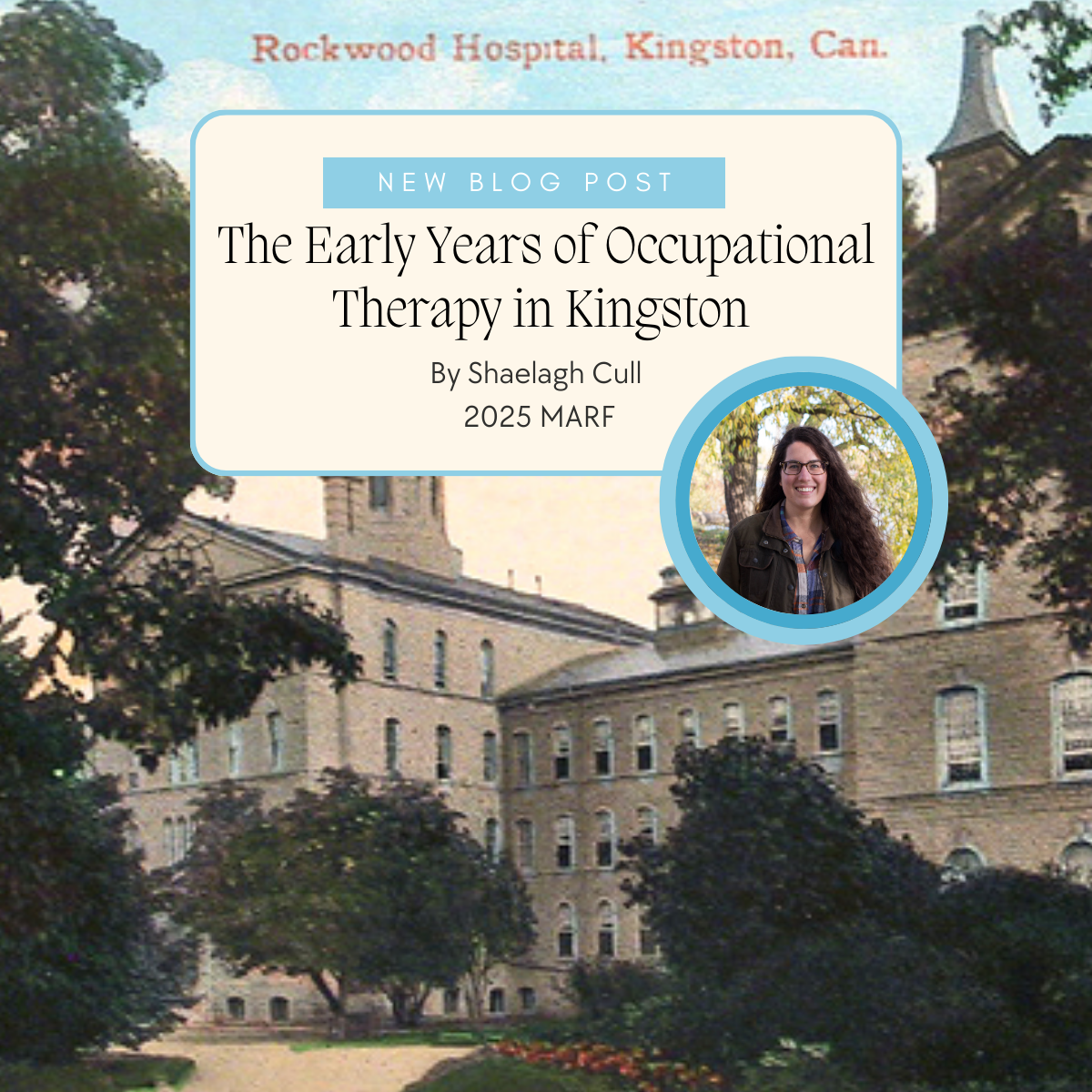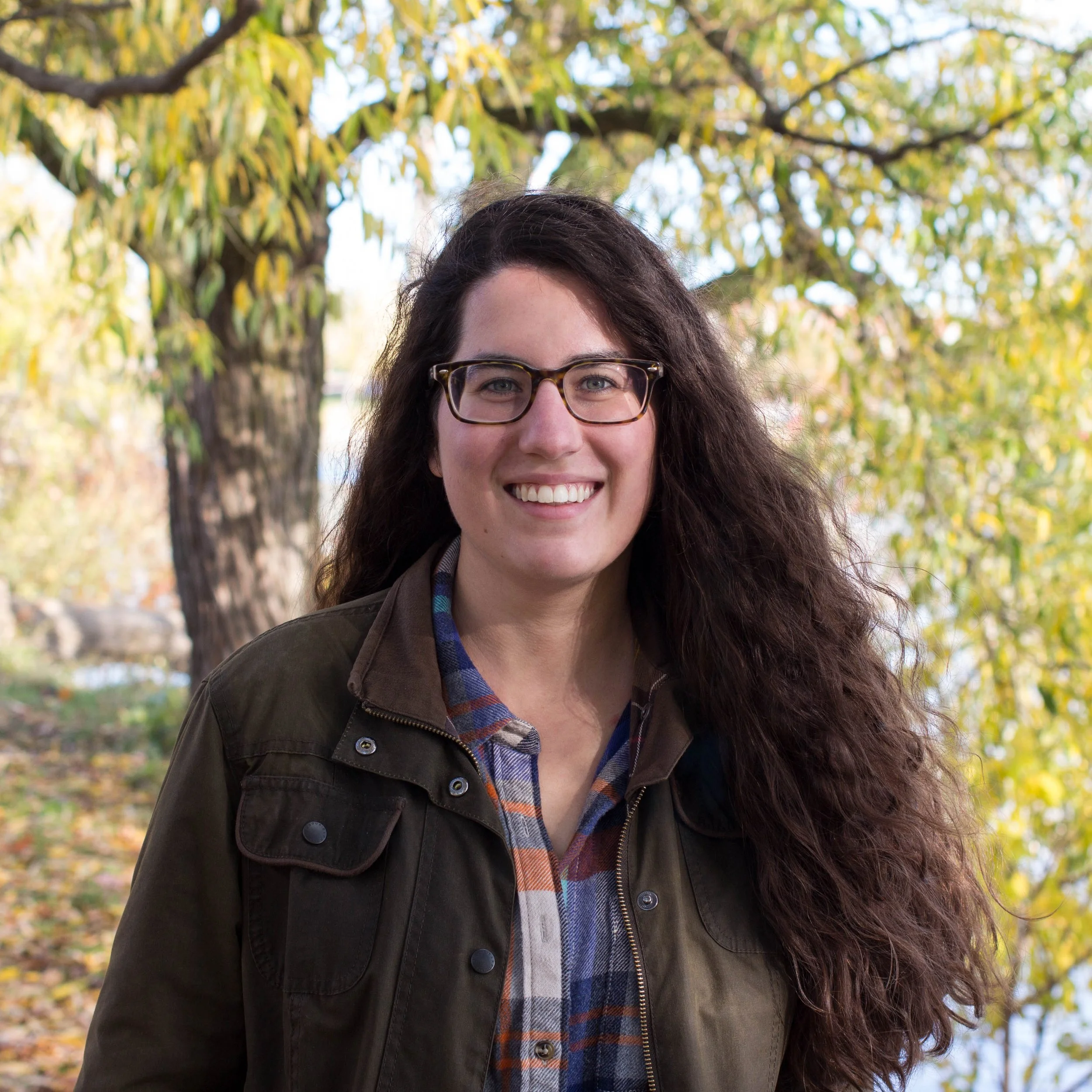The Early Years of Occupational Therapy in Kingston
In 1923, Dr. Charles Kirk Clarke (1857–1924) was invited to the House of the Royal Society of Medicine in London, England, to present a lecture at the Quarterly Meeting of the Medico-Psychological Association of Great Britain and Ireland. One of Canada’s most influential nineteenth-century psychiatrists and Medical Director of the Canadian National Committee for Mental Hygiene, Clarke spent two decades (1885–1905) as superintendent of the Asylum for the Insane (formerly known as the Rockwood Asylum for the Criminally Insane). The prestigious invitation to present a lecture in London was a significant acknowledgment of Canada’s role in developing the field of psychiatry. Clarke used this opportunity to reflect on his career and to highlight Canadian medical professionals’ contributions to asylum reform in the late nineteenth and early twentieth centuries.[1] In his address, he discussed the adoption of a therapeutic approach at the Kingston Asylum that proved a great success in the treatment of ‘chronic mental disease’ – using occupations in the form of work and craft to compliment routine treatment.[2] This laid the groundwork for a new medical profession in Canada: occupational therapy. As the 2025 Margaret Angus Research Fellow, this summer I will trace the development of occupational therapy in Canada with a particular focus on the role that craft played in the treatment of patients.
Rockwood Asylum for the Criminally Insane and Moral Treatment
In 1858 the Rockwood Asylum for the Criminally Insane was constructed in the village of Portsmouth, on the western outskirts of Kingston. The asylum was intended to house those deemed ‘criminally insane’ and to prevent overcrowding in the Kingston Penitentiary. However, social reforms and new approaches to mental health treatment meant that the institution’s mandate steadily changed over its century-and-a-half long history.[3] Rockwood started with only twenty-four female patients in 1858, but when the main asylum building opened the following year, it could house up to three hundred patients.[4] Due to its size, Rockwood was later reclassified as a ‘general’ asylum, accepting private patients and overflow from other institutions.[5] In 1877 the Province of Ontario took over ownership of Rockwood from the Dominion of Canada, connecting it to a broader network of asylums.[6] In 1903 the annual “Report of the Inspector of Lunatic and Idiot Asylums” documented that in that year alone, the asylum treated six-hundred and ninety-eight patients, with some coming from as far as Algoma District in Northeastern Ontario.[7]
When Rockwood was constructed, social reform movements in Europe and North America had long been critiquing the inhumane conditions of asylums. Reformers turned to the writings of French physician Philippe Pinel (1745–1826) and British reformer Samuel Tuke (1784–1857), who were advocates for the humane treatment and rehabilitation of the mentally ill.[8] Independently of one another, Pinel and Tuke proposed an approach known as ‘moral treatment,’ which called for the removal of restraints and focused on providing patients with supervision and education in a therapeutic environment.[9] Pinel and Tuke advocated for good nutrition and frequent periods of rest, work, exercise, and recreational activities in a calm and structured atmosphere to build self-esteem and to bring order to patients’ lives.[10] The realities of these treatments often fell short of these ideals.
Work and Craft
Occupational activities, including work and craft, played an important role in moral treatment. Between treatments, patients spent long hours unoccupied and, with institutions often at capacity, medical professionals looked for ways of managing patients’ behaviour.[11] Psychiatric patients of the nineteenth and twentieth centuries were often deemed ‘unproductive’ and their perceived inability to contribute to their families, communities, and society at large was considered to be one of the causes of their illness.[12] To address this problem, superintendent Dr. William Metcalf, Charles Kirk Clarke’s predecessor, introduced occupations to Rockwood in the early 1880s.[13] During his lecture in London, Clarke spoke enthusiastically about the changes he observed:
The results were striking and nearly every patient at Rockwood was occupied daily. The occupations were many and the movement became widespread, attracting so much attention that the institution was regularly visited by American and English workers anxious to learn our methods. We never believed that a panacea for all the ills the mind is heir to had been found, but there was developed a most useful adjunct to the ordinary methods of treatment.[14]
Clarke’s enthusiasm somewhat masks the fact that, during the nineteenth century, occupations were most often demanding physical labour tasks. In her 2011 book Restoring the Spirit: The Beginnings of Occupational Therapy in Canada, 1890-1930, occupational therapist Judith Friedland notes that during this period, asylum staff made “no explicit attempts to use work to interest the patients or develop their skills.”[15] Occupational activities included agricultural work and building maintenance for men and cleaning tasks such as scrubbing floors and washing and ironing laundry for women.[16] Evidence of this work is found in the Museum of Health Care’s collections, which contain a floor polisher used at Rockwood during the 1850s and a rotary push lawn mower from the 1920s–1930s. Although Clarke referred to this work as a ‘panacea,’ many medical professionals and reformers considered this treatment both exploitative and unethical, inciting major debate over how to integrate occupations into psychiatric institutions. Asylums were most criticized by reform and labour groups who argued that engaging patients in work was immoral as it financially benefitted the institution and undercut local workers whose jobs were affected by the free labour of patients.[17]
Social class also determined the types of occupations offered. Private patients who paid for treatment at Rockwood were exempted from more arduous physical labour and were instead offered instruction in crafts including weaving, carpentry, and basketry.[18] Increasingly however, craft occupations became more integrated into asylum life such that by the early twentieth century, weaving, tailoring, shoemaking, masonry, blacksmithing, sewing, carpentry, and knitting were common daily activities amongst all patients.[19] Although medical professionals had begun to experiment with the use of occupations in institutional settings, it took the devastation of World War One for the field of occupational therapy to take shape.[20] Check back next month to read about the birth of occupational therapy in Canada and its essential role in the rehabilitation of returning soldiers.
Special thanks to Ian M. Fraser and Janine M. Schweitzer for their generous support of the fellowship this year.
Bibliography
Clarke, C.K. “The Fourth Maudsley Lecture.” The Journal of Mental Science 69, no. 286 (July 1923): 279-296.
Digby, Anne. “Moral Treatment at the Retreat, 1796–1846.” In The Anatomy of Madness: Essays in the History of Psychiatry 2, edited by W.F. Bynum, Roy Porter, and Michael Shepherd. London and New York: Routledge, 1988: 52–72.
Digby, Anne. “The Changing Profile of a Nineteenth-Century Asylum: The York Retreat.” Psychological Medicine 14, no. 4 (November 1984): 739-748.
Evans, Sara Biegel. “Healing in the Asylum: A Study of Kingston Asylum During the 1870s and 1880s.” Prandium: The Journal of Historical Studies 8, no. 1 (Fall, 2019): 1-21.
Friedland, Judith, Isobel Robinson, and Thelma Cardwell. “In the Beginning: CAOT from 1926-1939.” Occupational Therapy Now 3, no. 1 (January/February 2001): 15-19.
Friedland, Judith. Restoring the Spirit: The Beginnings of Occupational Therapy in Canada, 1890-1930. Kingston: McGill-Queen's University Press, 2011.
Legislative Assembly of Canada. “Thirty-sixth Annual Report of the Inspector of Prisons and Charities upon the Lunatic and Idiot Asylums of the Province of Ontario.” Toronto: Warwick Bros. and Rutter, 1903.
Rose, Sarah F. No Right to Be Idle: The Invention of Disability, 1840s–1930s. North Carolina: University of North Carolina Press, 2017.
Terbenche, Danielle. “'Curative' and 'Custodial': Benefits of Patient Treatment at the Asylum for the Insane, Kingston, 1878-1906.” Canadian Historical Review 86, no. 1 (March 2005): 29-52.
Endnotes
[1] Charles Kirk Clarke, “The Fourth Maudsley Lecture,” The Journal of Mental Science 69, no. 286 (July 1923): 279-296. It is important to note that Clarke was an outspoken proponent of eugenics, which is clear in his Royal Society of Medicine address. In his introductory comments, Clarke calls for stricter immigration policies to reduce the “proportion of defectives and mentally diseased” entering the country. He refers to the mentally ill as a ‘burden’ on Canadian resources and as immigrant women and girls as “persistently immoral.” Clarke’s approach to mental health treatment was rooted in anti-immigration and eugenic ideologies and although he was a major figure in Canadian psychiatry in the nineteenth century, this remains part of his legacy.
[2] Ibid., 283.
[3] Danielle Terbenche, “'Curative' and 'Custodial': Benefits of Patient Treatment at the Asylum for the Insane, Kingston, 1878-1906,” Canadian Historical Review 86, no. 1 (March 2005): 32
[4] Ibid.
[5] Ibid.
[6] Ibid.
[7] Legislative Assembly of Canada, “Thirty-sixth Annual Report of the Inspector of Prisons and Charities upon the Lunatic and Idiot Asylums of the Province of Ontario,” (Toronto: Warwick Bros. and Rutter, 1903), xiv, 63.
[8] Anne Digby, “The Changing Profile of a Nineteenth-Century Asylum: The York Retreat,” Psychological Medicine 14, no. 4 (November 1984): 739.
[9] Sara Biegel Evans, “Healing in the Asylum: A Study of Kingston Asylum During the 1870s and 1880s,” Prandium: The Journal of Historical Studies 8, no. 1 (Fall, 2019): 6.
[10] Anne Digby, “Moral Treatment at the Retreat, 1796–1846,” in The Anatomy of Madness: Essays in the History of Psychiatry 2, edited by W.F. Bynum, Roy Porter, and Michael Shepherd (London and New York: Routledge, 1988): 52–53.
[11] Judith Friedland, Restoring the Spirit: The Beginnings of Occupational Therapy in Canada, 1890-1930. (Kingston: McGill-Queen's University Press, 2011), 14.
[12] Sarah F. Rose, No Right to Be Idle: The Invention of Disability, 1840s–1930s (North Carolina: University of North Carolina Press, 2017), 1-3.
[13] Clarke, “The Fourth Maudsley Lecture,” 283.
[14] Ibid.
[15] Friedland, Restoring the Spirit, 19.
[16] Ibid.
[17] Ibid, 20.
[18] Ibid.
[19] Legislative Assembly of Canada, “Thirty-sixth Annual Report,” 70, 72-73.
[20] Judith Friedland, Isobel Robinson, and Thelma Cardwell. “In the Beginning: CAOT from 1926-1939.” Occupational Therapy Now 3, no. 1 (January/February 2001): 15.
About the Author
Shaelagh Cull (MARF 2025)
Shaelagh Cull is in independent researcher who specializes in the history of craft in Canada. She holds a Master’s of Art History from Queen’s University and is an active member of the Kingston Handloom Weavers and Spinners Guild. As the 2025 Margaret Angus Research Fellow, Shaelagh will trace the development of occupational therapy, exploring how weaving and other crafts were used in medical settings in Kingston and across Canada. She is excited to bring this history to life with fascinating objects from the Museum’s collections.





